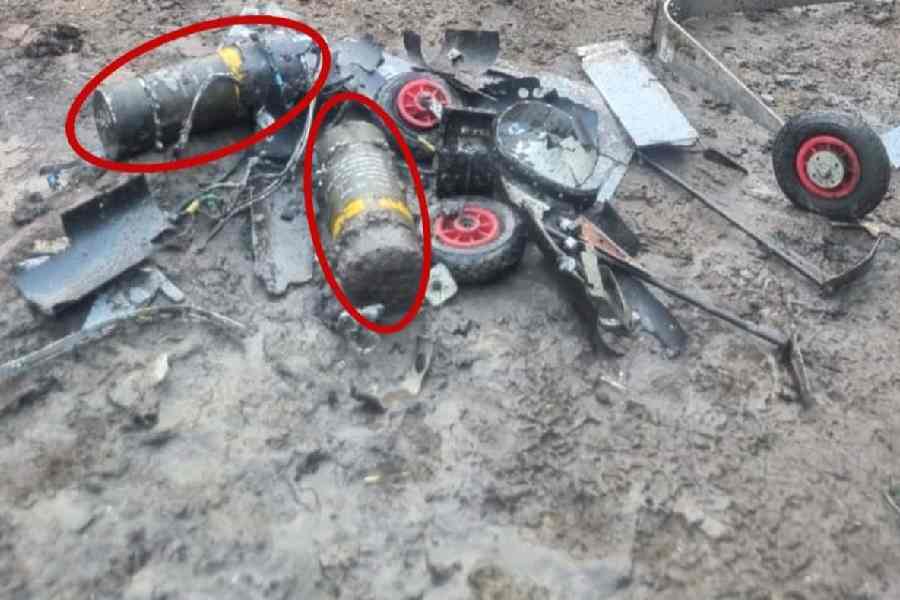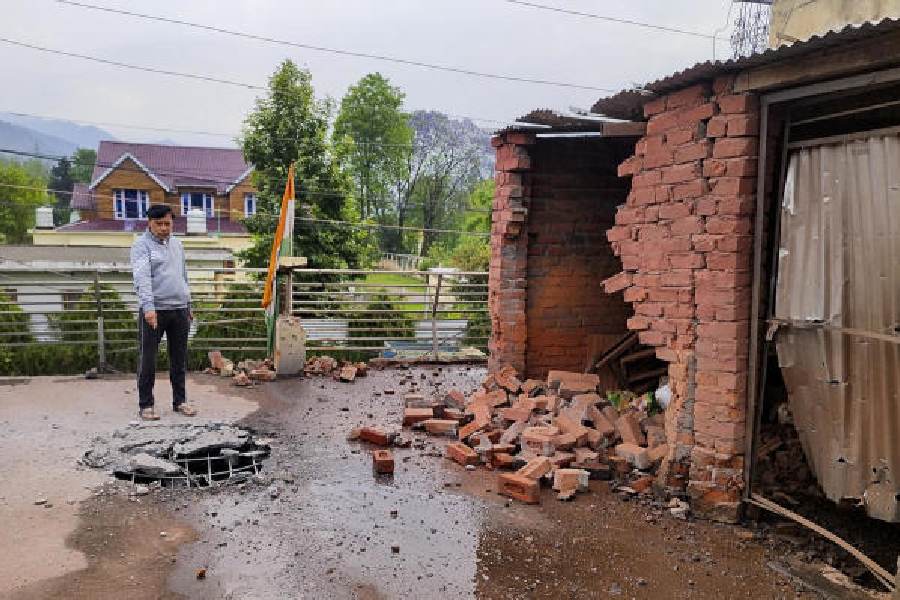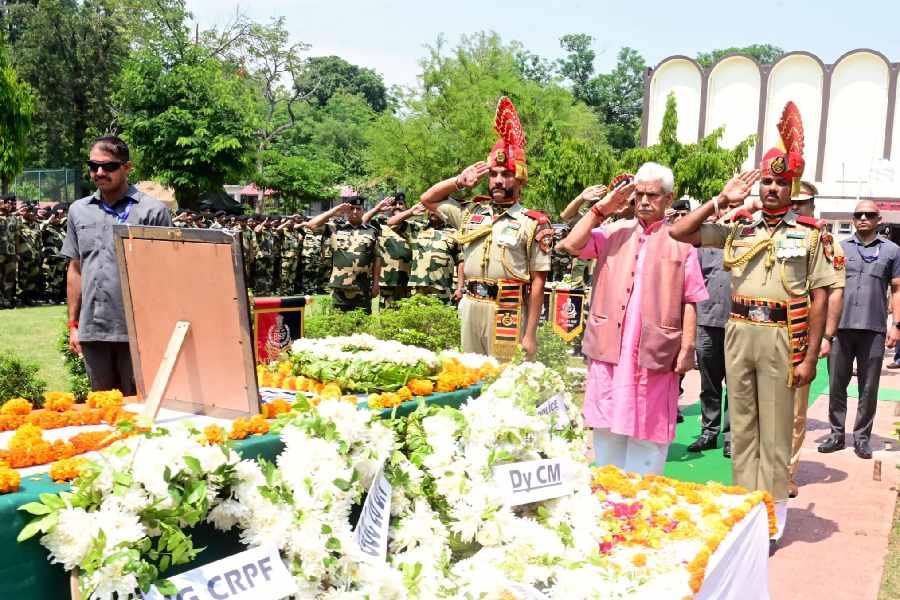 |
 |
| The Ganesh idol at the Gopinatham temple and (above) the forests that were once Veerappan’s territory. Telegraph pictures |
Gopinatham, Oct. 17: Exactly a year after Veerappan’s death, the Karnataka forest department is still struggling to make its writ run in the jungles he ruled. The brigand’s birthplace has now spawned a new adversary for officials: Lord Ganesh.
Residents of Gopinatham, the village on the Tamil Nadu-Karnataka border where the bandit spent the early years of his life, are now pitted against the forest department over a Ganesh temple that is coming up here.
The shrine is drawing hordes of pilgrims from both states, annoying the officials. They say that as the area is a reserve forest, there cannot be a full-fledged temple here.
Veerappan’s shadow falls on this conflict, too, a lead player in it being Parimala Nagappa, wife of former Karnataka agriculture minister Nagappa, who was kidnapped and killed by the bandit in 2003.
Parimala, now the local MLA, has sworn that the temple will be completed and stay open to all.
The shrine first came up as a makeshift “Mukhaneeshwara” temple, built by a group of Veera Shaivites just 1 km up the hills from here, among the shrubs and rocks under a kallathi tree “with curative properties”. The linga there is believed to combine the powers of Vishnu, Shiva and Brahma.
 |
| Veerappan: Not forgotten |
“A Shiva linga ? and idols of Lord Shiva, Parvathi and Nagamma (serpent deity) ? were dug out from an anthill on the foothills of nearby Maylaimalai. The command came from Lord Shiva in a dream to a priest named Shanthan alias Kuppuswamy,” said Raja, a devotee and a businessman who had come with his family to worship there.
It was Raja’s family, devout Veera Shaivites from Ramapura near the M.M. Hills, who installed the Ganesh idol in front of the shrine. Sculpted in Avinashi in Tamil Nadu, the majestic five-and-a-half-foot stone statue is to be consecrated on October 22.
“Who are these officials to object?” fumed a devotee, Kancha Shetty from Manjapuram. “These forests are Lord Shiva’s.”
For now, the officials are making the best of a bad situation, by trying to get a share of the pie. With the famous Hogenekkal falls just 12 km from Gopinatham, the narrow, rugged, hill dirt track leading to the temple has been witnessing an invasion of cars, particularly in the weekends.
“The forest department has set up three check-posts and sent a proposal to the government to collect a vehicle toll,” said Perumal, a farm hand.
The officials have also imposed an after-dusk “curfew” on the village, apparently to stop Naxalites crossing over from Tamil Nadu’s Dharmapuri across the Cauvery in the night in the guise of local villagers.
“They have told us not to leave the village after 6 pm and not to graze our cattle on the fringes of the forest,” Perumal fumed. “What do we do in a medical emergency? The STF (special task force) guys have left; now the forest officials are harassing us.”
That remark is just the cue one needs ? a little prodding brings out the undercurrent of sympathy for the slain brigand and villagers’ suspicion of his STF hunters. Gopinatham is unanimous that its “Robin Hood” was unfairly killed.
“The STF says Veerappan was intercepted in a decoy vehicle and shot with his associates on October 18 last year. We believe he was poisoned to death after being lured to a rock-cut cave-like structure near the village on the promise that his eye problem would be treated there,” said a villager who did not wish to be named.
The sandalwood smuggler’s ghost came back to haunt the Tamil Nadu police yesterday, two days before the first anniversary of his death. The Salem police fought off an armed, 50-member gang’s attempt to cart away two tonnes of sandalwood, worth Rs 50 lakh, from a godown in a private estate.
The sandalwood had been grown in a licensed plantation, but is entangled in a court case between the estate’s owners and the forest department.











